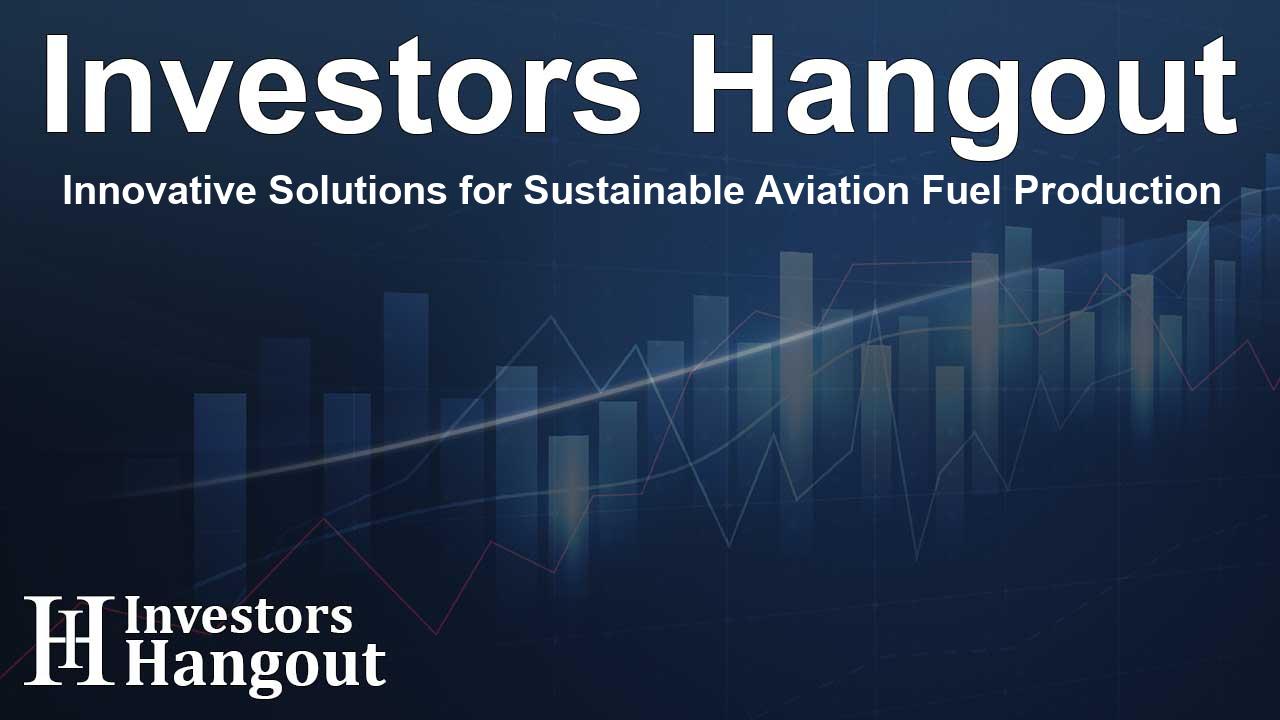Innovative Solutions for Sustainable Aviation Fuel Production

Syzygy Plasmonics Unveils Groundbreaking White Paper on SAF
Syzygy Plasmonics has recently released a transformative white paper titled "Solving the SAF Trilemma: Cost, Feedstock, and Financeability." This essential document articulates a fresh perspective on producing sustainable aviation fuel (SAF) and highlights the company's innovative NovaSAF™ platform. Their methodology integrates scalable solutions that align with current policies and economic realities, making it a viable path to reducing carbon emissions in aviation.
NovaSAF™: A Game-Changer in Aviation Fuel Production
Trevor Best, the CEO of Syzygy Plasmonics, stated, "NovaSAF™ is more than a product—it's a policy enabler." This sentiment underscores the potential of this new white paper showing how technological advancements can align regulatory frameworks with industry needs, further supporting climate action and creating economic possibilities.
The Demand for Sustainable Aviation Fuel
With global regulators intensifying commitments to cut aviation emissions, the demand for SAF is projected to soar. By 2050, forecasts suggest a need exceeding 200 million metric tons of SAF annually. However, the currently available supply falls significantly short, with a gap of over 120 million metric tons. The NovaSAF™ initiative aims to address this critical shortfall. It converts biogenic methane and carbon dioxide into ASTM-certified SAF, utilizing innovative light-activated catalysts and renewable electricity. Such a method not only diminishes overall equipment costs but also takes advantage of widely accessible feedstocks and yields strong returns on projects.
A Cost-Effective Approach to SAF Production
One of the standout features of the NovaSAF™ process is its ability to deliver SAF at costs comparable to or below traditional hydrogenated esters and fatty acids (HEFA) technologies. This opens doors for potential scenarios where it can achieve cost parity with conventional jet fuels, such as Jet-A.
Regulatory Compliance and Market Access
NovaSAF™ successfully meets both SAF and eSAF (electrofuels) requirements as outlined by the European Union's RED III directive and the UK's Renewable Transport Fuel Obligation (RTFO). The production from a NovaSAF plant will yield SAF with two separate classifications: an Advanced Biofuel and a Renewable Fuel of Non-Biological Origin (RFNBO). This dual compliance grants access to premium SAF markets and strengthens the long-term viability of investments in sustainable fuel technology.
Powering NovaSAF™ with Renewable Energy
Central to the NovaSAF™ technology is Syzygy's Rigel reactor, which leverages renewable energy to eliminate fossil fuel combustion in the production process. This advancement pairs seamlessly with established Fischer-Tropsch technology, which transforms biogas into liquid fuels suitable for further processing into SAF. Notably, the integration of these technologies into a modular system enhances the adaptability of production sites, making them capable of delivering localized solutions.
First Commercial Project and Future Prospects
Highlighting the practical applications of NovaSAF™, the paper discusses Syzygy's inaugural commercial project, NovaSAF 1. This innovative facility, situated in a region with over 90 percent renewable energy, will transform manure produced by 14,000 cows into 400,000 gallons (1,100 tons) of SAF annually. This project not only demonstrates the scalability of the NovaSAF™ platform but also promises to mitigate both methane emissions and those associated with aviation.
Syzygy's strategic commitment centers on increasing the production of SAF through consistent project execution and technology licensing. The company aims to meet the burgeoning demand for low-carbon aviation fuels over the forthcoming 25 years, ensuring that its sustainable solutions are both economically and environmentally sound.
Frequently Asked Questions
What is NovaSAF™?
NovaSAF™ is a platform developed by Syzygy Plasmonics for producing sustainable aviation fuel by converting biogenic methane and carbon dioxide into ASTM-certified SAF.
How does NovaSAF™ differ from traditional SAF production methods?
NovaSAF™ utilizes light-activated catalysts and renewable electricity, making it more cost-effective and scalable compared to traditional methods like HEFA.
What are the regulatory benefits of NovaSAF™?
NovaSAF™ meets EU's RED III and UK's RTFO requirements, allowing it to access premium SAF markets and enhancing investment viability.
What is the expected demand for SAF by 2050?
The demand for sustainable aviation fuel is projected to exceed 200 million metric tons annually by the year 2050, highlighting the importance of innovative solutions like NovaSAF™.
Where is Syzygy's first commercial NovaSAF™ project located?
Syzygy's first commercial project, NovaSAF 1, is located in a region utilizing renewable energy and will convert cow manure into SAF, demonstrating the scalability of the NovaSAF™ platform.
About The Author
Contact Lucas Young privately here. Or send an email with ATTN: Lucas Young as the subject to contact@investorshangout.com.
About Investors Hangout
Investors Hangout is a leading online stock forum for financial discussion and learning, offering a wide range of free tools and resources. It draws in traders of all levels, who exchange market knowledge, investigate trading tactics, and keep an eye on industry developments in real time. Featuring financial articles, stock message boards, quotes, charts, company profiles, and live news updates. Through cooperative learning and a wealth of informational resources, it helps users from novices creating their first portfolios to experts honing their techniques. Join Investors Hangout today: https://investorshangout.com/
The content of this article is based on factual, publicly available information and does not represent legal, financial, or investment advice. Investors Hangout does not offer financial advice, and the author is not a licensed financial advisor. Consult a qualified advisor before making any financial or investment decisions based on this article. This article should not be considered advice to purchase, sell, or hold any securities or other investments. If any of the material provided here is inaccurate, please contact us for corrections.
